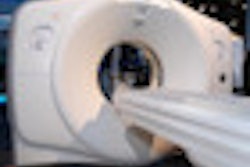The Rule Out Myocardial Ischemia/Infarction Using Computer Assisted Tomography (ROMICAT) II study sought to determine whether the early use of CCTA was more effective than standard emergency department care. ROMCAT II was a "comparative real-world effectiveness trial," explained Dr. Udo Hoffmann. The study team "wanted to include all possibilities of standard of care, have a good mix of sites that are representative of the real world, and have a patient cohort that has enough risk to justify the use of CT."
With early CCTA, length of stay was reduced by a mean of 7.6 hours, time to diagnosis was shortened, and nearly half of patients were discharged directly from the emergency department, compared with just 12% of patients who underwent standard care.
The presentation will include results from the 28-day follow-up, as well as a new gender analysis of the results, Hoffman said.
In emergency department patients with symptoms suggestive of acute coronary syndromes, CCTA-based triage improves clinical decision-making by reducing the length of hospital stay and increasing discharge rates compared to standard evaluation, the group concluded.



















